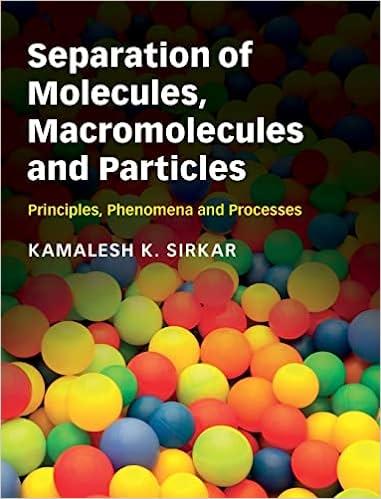Answered step by step
Verified Expert Solution
Question
1 Approved Answer
Question Formaldehyde, is a versatile chemical with numerous industrial applications. It can be efficiently produced from methanol through a catalytic oxidation reaction and methanol dehydrogenation.
Question
Formaldehyde, is a versatile chemical with numerous industrial applications. It can be efficiently produced from methanol through a catalytic oxidation reaction and methanol dehydrogenation. This method offers a costeffective and widely used route for the production of formaldehyde, which serves as a crucial building block in the synthesis of resins, disinfectants, and various other chemical products. In a chemical process that produces formaldehyde, a vaporized fresh feed stream of methanol and oxygen ; is met with a vaporized methanol recycle stream from the first distillation column. The mixed streams are fed to a silver catalytic packed bed reactor PBRR isothermally maintained at atm and The reactor product stream has a flowrate of USE YOUR GROUP FLOWRATE and contains Formaldehyde, Water, Methanol, Oxygen and wt Hydrogen. The two reactions occur simultaneously in the presence of a silver catalyst in the PBR are as follows and the fractional conversion of methanol is
Overall reaction
The reactor effluents are separated using a distillation column T set at ; in which the overhead product is gases Oxygen Hydrogen, Methanol, Water and Formaldehyde while the bottoms product contains formaldehyde, methanol and water from the reactor. After separation, the bottom stream is then heated to match the temperature and pressure of the feed stream before parts of it is purged and recycled back to react. The recycle stream contains methanol, formaldehyde and water from stream However, stream is removed from the system as a purge stream to lower accumulation of unreacted methanol, water and formaldehyde in the system. The purge stream contains the balances of methanol, formaldehyde and water that were not recycled from stream The overhead product gases Oxygen Hydrogen, Methanol, Water and Formaldehyde of stream are further separated by a distillation column T set at :; to increase the purity of formaldehyde. The overhead product is methanol and and, all of the hydrogen and oxygen from stream The bottom products is mainly the balance of methanol, water and formaldehyde from stream
Answer the following questions:
Determine the mole flow and the mole of the reactor product.
Determine the moles and mole of methanol and oxygen fed.
Determine the moles and mole of methanol, oxygen, formaldehyde, water and hydrogen present in each stream. Attach an excel sheet showing all the calculations
Determine the degrees of freedom of the overall system. Comment on your findings from the degrees of freedom analysis.
Determine the heat of reaction of methanol oxidation reaction and methanol dehydrogenation. Use the extent of reaction method. What is the overall heat of reaction?
Use excel to draw a fully labelled block flow diagram BFD for this process.
Note: Name all your streams and label the streams with the values of the molehr and mole you calculated in and

Step by Step Solution
There are 3 Steps involved in it
Step: 1

Get Instant Access to Expert-Tailored Solutions
See step-by-step solutions with expert insights and AI powered tools for academic success
Step: 2

Step: 3

Ace Your Homework with AI
Get the answers you need in no time with our AI-driven, step-by-step assistance
Get Started


